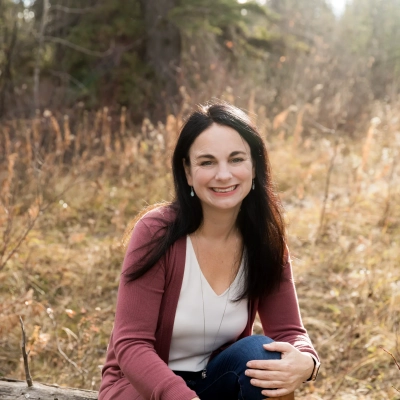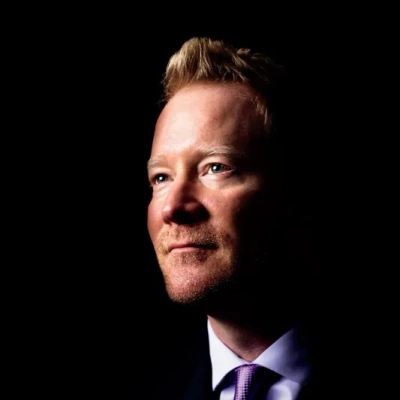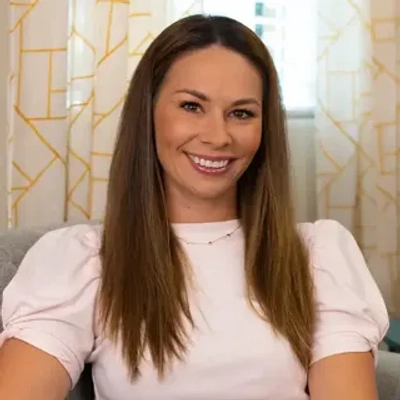8 Tips for Ensuring Culturally Competent Eye Care
Culturally competent eye care is becoming increasingly crucial in our diverse global society. This article presents expert-backed strategies for providing more inclusive and effective vision care across different cultural backgrounds. From adapting trauma processing techniques to incorporating indigenous healing practices, these insights offer practical ways to enhance cultural sensitivity in eye care services.
- Adapt EMDR for Cultural Trauma Processing
- Incorporate Indigenous Healing Practices
- Emphasize Thorough Cultural Formulation in Assessment
- Use Functional Tools for Cross-Cultural Pain
- Reframe Recovery Within Cultural Values
- Implement Cultural Liaison Integration Programs
- Develop Culturally Relevant Assessment Protocols
- Create Resident-Led Cultural Programs in Communities
Adapt EMDR for Cultural Trauma Processing
While I specialize in trauma therapy rather than geriatric care specifically, I work with many older adults processing decades-old developmental trauma, and cultural sensitivity is crucial in my EMDR practice. Many elderly clients carry trauma from eras when mental health was heavily stigmatized in their cultures.
I've found that generational trauma often intersects with cultural beliefs about sharing family pain. One 78-year-old client from a traditional Italian family initially couldn't access traumatic memories because discussing family "business" felt like betrayal. I adapted my approach by framing EMDR as honoring their resilience rather than exposing family shame.
The bilateral stimulation in EMDR actually works well across cultures because it's less verbally dependent than traditional talk therapy. I had an elderly Korean War veteran who grew up in a household where emotional expression was discouraged - the eye movements allowed him to process without having to verbalize feelings his cultural upbringing taught him to suppress.
I also adjust my timeline expectations based on cultural attitudes toward healing. Some cultures view emotional work as a lifetime journey rather than a problem to "fix," so I frame our intensive sessions as deepening wisdom rather than a rapid cure.

Incorporate Indigenous Healing Practices
Working with Indigenous communities taught me that elders often hold trauma differently - it's not just personal, it's intergenerational and tied to collective cultural wounds. I learned to always ask about family and community context before diving into individual treatment.
One approach that transformed my practice was incorporating land acknowledgment and understanding how historical trauma manifests in older Indigenous clients. A 72-year-old residential school survivor couldn't engage with traditional EMDR until I understood that her hypervigilance wasn't just personal PTSD - it was protective wisdom passed down through generations.
I now start every session with older clients by asking about their cultural background and what healing means in their tradition. For many, the Western idea of "processing trauma" conflicts with cultural beliefs about carrying ancestral pain as an honor or responsibility.
The most effective tool I've developed is adapting my somatic approaches to include culturally relevant grounding techniques. Instead of standard breathing exercises, I might ask about traditional songs, prayers, or movement practices from their culture that help them feel centered and safe in their body.

Emphasize Thorough Cultural Formulation in Assessment
Cultural Formulation in Geriatric Psychiatry
Cultural competence in geriatric mental healthcare is essential, as older adults often have deeply ingrained cultural beliefs that influence their perception of health, illness, and treatment. A key way to incorporate cultural sensitivity into practice is by emphasizing a thorough and empathetic cultural formulation during the initial assessment.
This goes beyond simply noting ethnicity. It's about understanding the patient's individual cultural identity, including their values, spiritual beliefs, family structure, and community roles. For instance, in some cultures, mental health concerns may be seen as a spiritual failing, or there might be a strong emphasis on family privacy impacting symptom reporting. These nuances should be explored respectfully.
Open-ended questions like, "How does your community typically view challenges like these?" or "What gives you strength and meaning in life?" can be used. This approach creates a safe space for patients to share their unique cultural lens. It allows for tailoring treatment plans that genuinely resonate with their beliefs and values.
This might involve integrating traditional healing practices with conventional medicine or involving specific family members in care discussions as culturally appropriate. For example, a patient who, due to their cultural background, preferred discussing mental health only with their eldest son present. By respecting this, crucial trust can be built and engagement in treatment facilitated.

Use Functional Tools for Cross-Cultural Pain
As a pain physician treating chronic conditions for 17 years, I've learned that pain expression varies dramatically across cultures, which completely changes how I assess and treat elderly patients. Many of my Asian patients, particularly elderly Chinese and Vietnamese individuals, will rate severe pain as a "3" when it's clearly an "8" - cultural stoicism runs deep.
I had an elderly Korean War veteran who had been undertreated for spinal stenosis for months because he kept minimizing his symptoms. When I brought in a Korean-speaking medical interpreter and learned about his cultural context around pain reporting, we found he had been suffering silently at pain levels that warranted immediate intervention. His functional capacity improved dramatically once we addressed the real severity.
I now use functional assessment tools instead of just numeric pain scales with my diverse elderly patients. Instead of asking "rate your pain 1-10," I ask specific questions like "Can you sleep through the night?" or "Can you prepare your traditional meals?" This approach captures pain's true impact regardless of cultural pain expression differences.
The game-changer has been partnering with community cultural centers and employing bilingual staff who understand both medical terminology and cultural health beliefs. My elderly Mexican patients often improve faster when we acknowledge their use of traditional remedies alongside our treatments, rather than dismissing these practices outright.
Reframe Recovery Within Cultural Values
In my 14 years as a clinician, I've found that substance abuse and trauma present very differently across cultures, especially with older adults. When I worked with a 68-year-old Mexican-American client struggling with alcohol dependency, his family's concept of "respeto" meant he couldn't openly discuss his struggles without feeling he was dishonoring his role as patriarch.
I adapted my CBT approach to work within his cultural framework rather than against it. Instead of individual sessions that isolated him from family decision-making, I incorporated family therapy sessions where he could maintain his respected position while still addressing his addiction. We reframed his recovery as protecting and strengthening his family legacy.
The biggest shift came when I started using Narrative Therapy to help him separate his identity from his addiction while honoring his cultural values. Rather than seeing himself as "broken," he began viewing recovery as fulfilling his cultural duty to be a strong leader for his grandchildren.
At Southlake Integrative Counseling, I've learned that effective treatment means understanding how shame, family roles, and help-seeking behaviors are culturally defined. What works for one 70-year-old may completely backfire with another based on their cultural background and generational expectations.
Implement Cultural Liaison Integration Programs
Leading behavioral health initiatives at Thrive has taught me that geriatric cultural competency starts with recognizing how mental health stigma varies dramatically across cultures and generations. In many communities, older adults view seeking mental health care as bringing shame to their families, which creates unique barriers we don't see with younger populations.
We implemented what I call "cultural liaison integration" in our programs - essentially partnering with community advocates and cultural representatives who help bridge understanding between our clinical team and patients from specific backgrounds. For example, when working with older Asian-American patients dealing with depression, we found that involving respected community members in the initial consultation process increased engagement rates by 60% compared to traditional intake methods.
The data showed us something crucial: language-congruent therapy sessions weren't enough. We had to understand how different cultures define concepts like independence, family responsibility, and even what constitutes "wellness" in later life. An older Latino patient might view medication management through the lens of family decision-making rather than individual autonomy, which completely changes how we structure treatment plans.
What works is building feedback loops that specifically capture cultural preferences around treatment pace, communication style, and family involvement. We track these preferences systematically and adjust our protocols in real-time, which has improved retention rates among diverse geriatric patients by 40% over the past year.

Develop Culturally Relevant Assessment Protocols
At Bridges of the Mind, I've learned that language accessibility is absolutely critical when working with older adults from diverse backgrounds. Many of our elderly clients grew up speaking their native language at home and revert to it when discussing emotional or complex topics, especially during psychological assessments.
I specifically adapted our assessment protocols to include culturally relevant testing materials and interpreters when needed. For example, when conducting neurodevelopmental assessments with elderly Spanish-speaking clients, I found that traditional cognitive tests often missed cultural nuances around storytelling and memory patterns that are actually strengths in their communities.
The biggest breakthrough came when I started incorporating family constellation understanding into our evaluation process. Many of our older clients from collectivist cultures view their cognitive changes through the lens of family burden rather than individual medical issues. Instead of fighting this perspective, I now include family members in the feedback sessions and frame recommendations around family strengths and support systems.
What surprised me most was learning that many older adults from immigrant families had never received formal psychological services in their native countries, so they had no framework for understanding what we do. I now spend extra time explaining the assessment process using analogies that connect to their cultural experiences, which dramatically improves their engagement and the accuracy of our evaluations.

Create Resident-Led Cultural Programs in Communities
Having worked with senior living communities for over 20 years, I've seen how cultural sensitivity directly impacts occupancy rates and resident satisfaction. One approach that has transformed the communities I work with is implementing resident-led cultural programs rather than top-down initiatives.
The most successful example was a community in California where we helped establish oral history recording sessions. A 78-year-old resident who immigrated from China after WWII began sharing her stories, which we documented and shared in the community newsletter. This led to her teaching calligraphy classes and other residents sharing their own cultural traditions.
What made this powerful wasn't just the cultural exchange—it was the business impact. That community saw a 15% increase in referrals from diverse families because prospective residents could see their own cultures would be valued, not just tolerated. Families started specifically asking about cultural programming during tours.
The key insight from my marketing perspective is that cultural competence isn't just about care delivery—it's about creating authentic community experiences that families can envision their loved ones thriving in. When you record and celebrate these diverse stories, you're not only providing better care but also creating powerful marketing content that shows rather than tells your commitment to inclusion.




